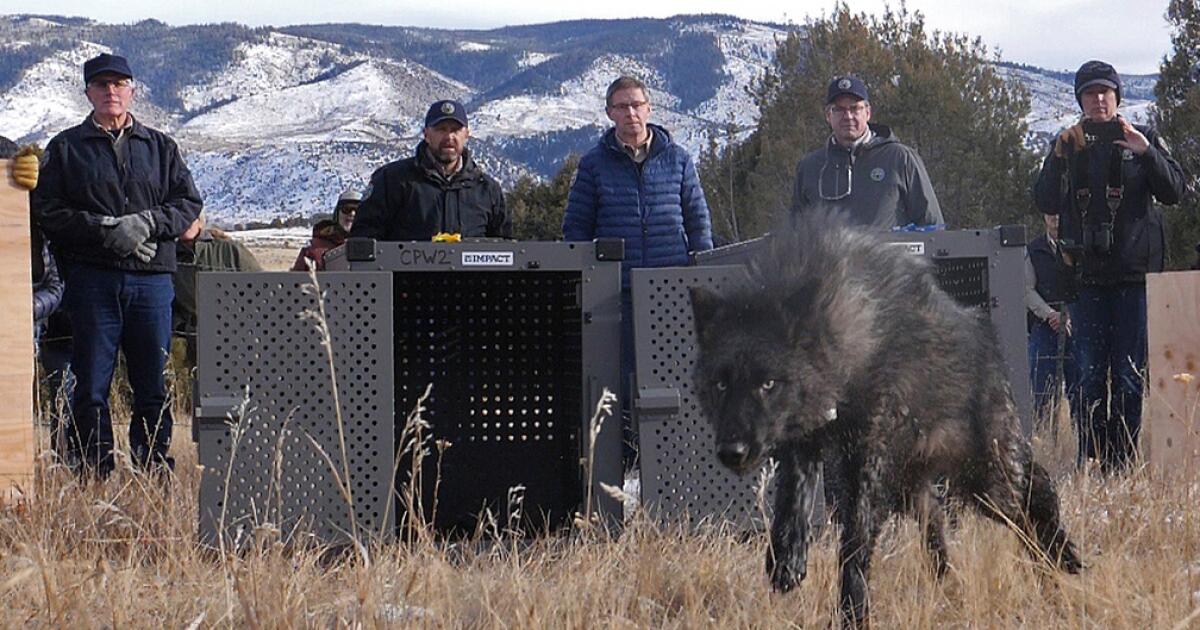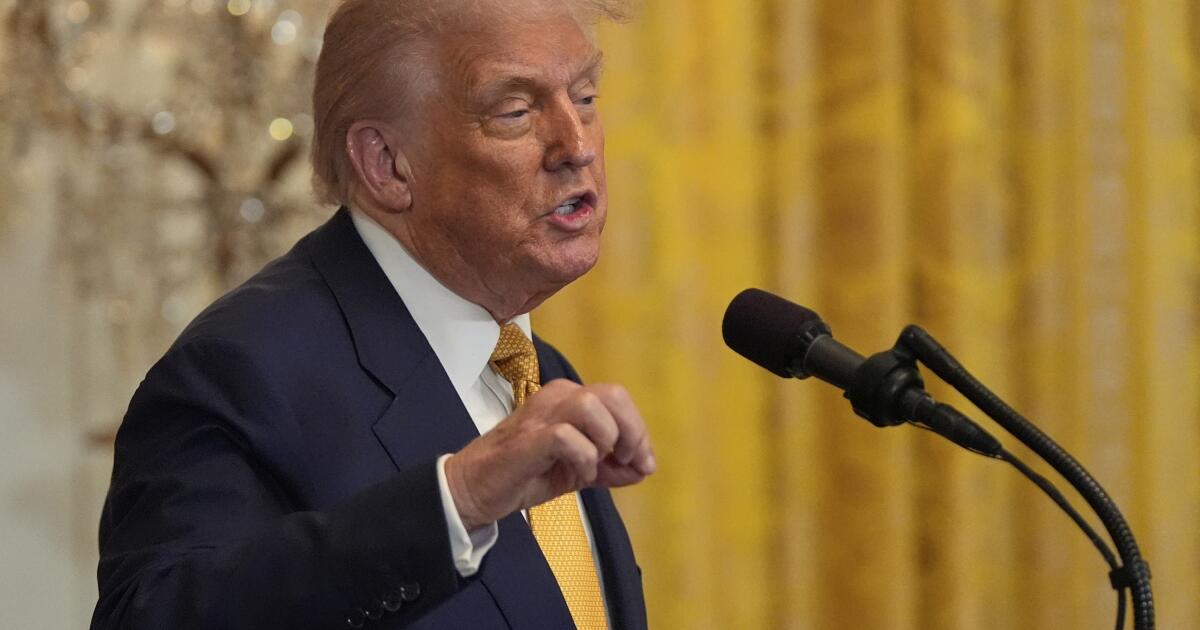Trump administration tells Colorado wolves must come from U.S., not Canada
FORT COLLINS, Colo. — The Trump administration is telling Colorado to stop importing gray wolves from Canada as part of the state’s efforts to restore the predators, a shift that could hinder plans for more reintroductions this winter.
The state has been releasing wolves west of the Continental Divide since 2023 after Colorado voters narrowly approved wolf reintroduction in 2020. About 30 wolves now roam mountainous regions of the state, and its management plan envisions potentially 200 or more wolves in the long term.
The program has been unpopular in rural areas, where some wolves have attacked livestock. Now, after two winters of releases during the Biden administration, wolf opponents appear to have found support from federal officials under President Trump.
Colorado wolves must come from Northern Rockies states, U.S. Fish and Wildlife Service Director Brian Nesvik told Colorado Parks and Wildlife Director Jeff Davis in a recent letter.
Colorado must “immediately cease and desist any and all efforts related to the capture, transport and/or release of gray wolves not obtained” from northern Rocky Mountain states, Nesvik wrote.
Most of those states — including the Yellowstone region states of Idaho, Montana and Wyoming, where wolves from Canada were reintroduced in the 1990s — have said they don’t want to be part of Colorado’s reintroduction.
That could leave Colorado in a bind this winter. The state plans to relocate 10 to 15 wolves under an agreement with the British Columbia Ministry of Water, Land and Resource Stewardship in Canada, a statement by Colorado Parks and Wildlife spokesperson Luke Perkins said Friday.
The agreement was signed before the state got the Oct. 10 letter from Nesvik, according to Perkins. He said the state “continues to evaluate all options to support this year’s gray wolf releases” after getting “recent guidance” from the Fish and Wildlife Service.
Though some of Colorado’s reintroduced wolves have come from Oregon, wolves released most recently have come from British Columbia.
The issue now is whether the federal agency required that wolves must only come from northern U.S. Rocky Mountain states when it designated Colorado’s “experimental” population of reintroduced wolves.
A federal notice announcing the designation in 2023 referred to the northern Rockies region as merely the “preferred” source of wolves, not the required one.
Defenders of Wildlife attorney Lisa Saltzburg said in a statement that the Fish and Wildlife Service was “twisting language” by saying wolves can’t come from Canada or Alaska.
People in Colorado “should be proud of their state’s leadership in conservation and coexistence, and the wolf reintroduction program illustrates those values,” Saltzburg said.
The Colorado governor’s office and Colorado Parks and Wildlife are in touch with the U.S. Interior Department about the letter and evaluating “all options” to allow wolf releases this year, Gov. Jared Polis spokesperson Shelby Wieman said by email.
Fish and Wildlife Service spokesperson Garrett Peterson, whose voicemail said he wouldn’t be available until after the government shutdown ends, didn’t immediately return a message seeking comment.
Gruver writes for the Associated Press.

